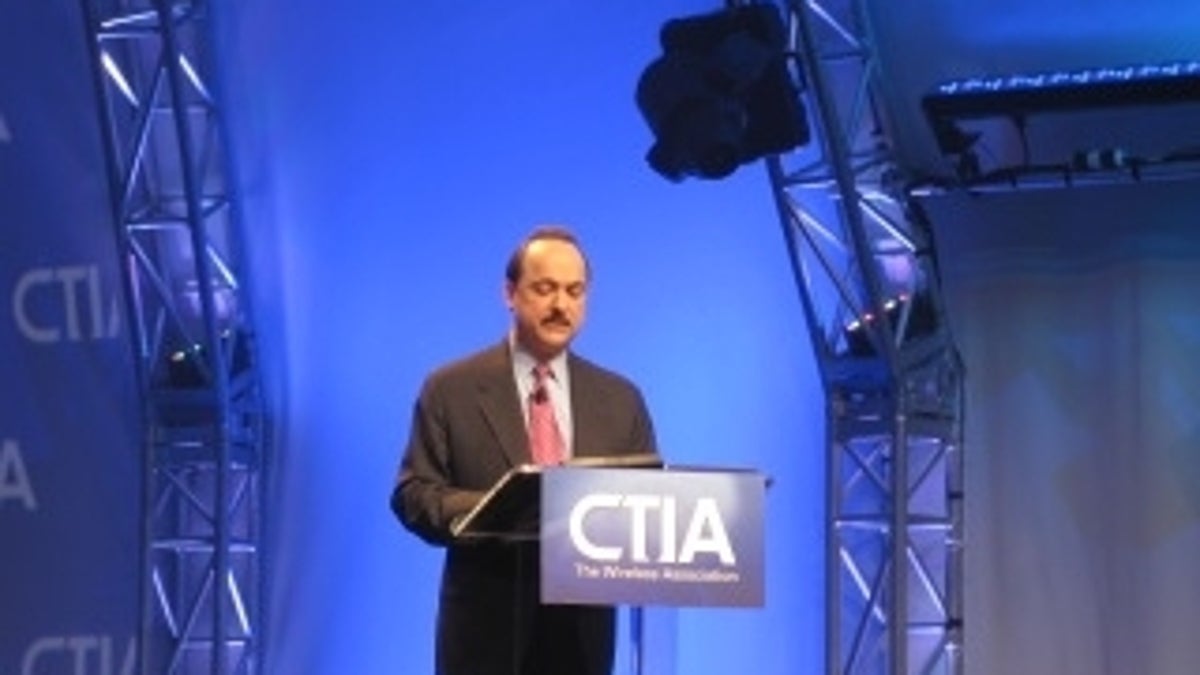AT&T execs want more spectrum, lighter regulation
AT&T executives speaking at the CTIA wireless show want the government to adopt policies to keep growth and investment in wireless going.

LAS VEGAS--AT&T executives are pushing the government to allocate more spectrum for wireless broadband and back off on regulation in order to keep the mobile broadband growth engine revving.
Ralph de la Vega, head of AT&T Mobility and the new chairman of CTIA, and Randall Stephenson, the CEO of AT&T, each spoke at the CTIA 2010 wireless trade show here Tuesday about how the U.S. leads the world in wireless broadband, but they emphasized the need for more spectrum and a light regulatory touch from the government to keep the momentum going.
De la Vega said the U.S. has more 3G subscribers than any other country in the world. In fact, one in five new subscribers to 3G are in the U.S., he added.
The U.S. is also leading the world in terms of building new advanced networks. Verizon Wireless is currently building its 4G LTE network. Meanwhile, Clearwire, which is partnered with Sprint, the third largest wireless provider in the U.S., is also well on its way to offering 4G services.
He also pointed out that the U.S. carriers are spending aggressively on mobile. In total, the four major U.S. carriers will spend $45 billion in 2010; about $22 billion to $23 billion will be spent on building wireless networks.
Stephenson said this growth and investment is a direct result of government policies that are more "hands off."
"When the rules and incentives are right, capital investment flows and it flows aggressively," he said during his speech. "The results (in the U.S.) are indisputable. The U.S. leads in 3G subscribers, mobile broadband, mobile apps, and emerging devices. Mobile broadband stands to be this decade's economic growth engine. "
But he warned that continued success is not guaranteed, and the government needs to continue taking an active role in promoting polices to encourage investment.
Top on the list for AT&T and the entire wireless industry is getting more spectrum into the market. The tag-team duo made a compelling case for the need for more spectrum. They said that demand for mobile broadband services is here today.
"Consumers have gotten a taste of mobile broadband," De la Vega said. "And the appetite seems unlimited."
He pointed out Pew Research predictions that mobile devices will become the primary device for accessing the Internet for most people in the world by 2020. And he noted that smartphones, which provide a more robust Internet experience and are growing in popularity, generate 10 times more traffic than typical feature phones.
Stephenson said that demand for mobile broadband will grow twice as fast as demand for traditional DSL and cable modem services. The key to meeting this demand is directly related to carriers' ability to access more spectrum, they said.
The CTIA has asked the FCC to free up an additional 800MHz of spectrum. The Federal Communications Commission said in its National Broadband Plan filed last week that it will work to get 500MHz of spectrum freed in the next 10 years. It expects to get 300MHz available within the next three years.
De la Vega said that the new spectrum allocation will likely not come fast enough and he called on the industry to make more efficient use of spectrum. He said that the 4G wireless technology LTE will help because it is 2.5 times more efficient than current 3G HSPA technology. But he also said applications need to be more efficient in their use of wireless networks.
"Consumers won't wait for us to get new spectrum," he said. "And even with the additional spectrum, it won't be enough. We need to find greater technology efficiencies."
He also emphasized the importance of using Wi-Fi, as well as femtocells, to offload traffic. AT&T has more than 20,000 Wi-Fi hot spots in the U.S. He emphasized that the U.S. is already leading in terms of Wi-Fi deployments, with more than 70,000 public Wi-Fi networks running--twice as many as other nations.
"We need to look at complementary technology and redirect demand there," he said. "Wi-Fi and femtocells are a win-win for consumers and carriers."

